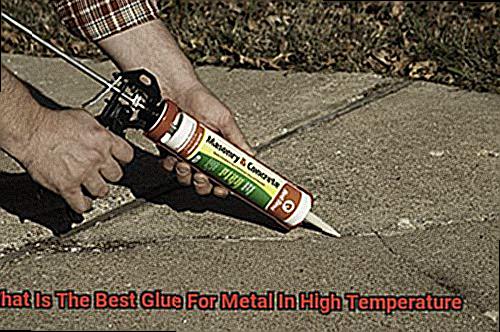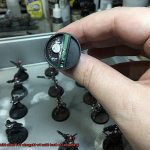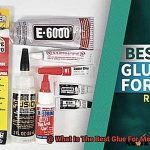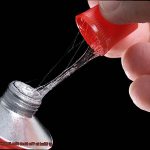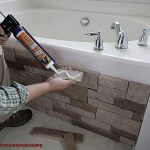If you’ve ever found yourself scratching your head, wondering which glue is the real deal when it comes to bonding metals in scorching hot environments, then you’ve come to the right place. We’re here to help you find that perfect adhesive that can take the heat and keep your metal projects rock solid.
In this blog post, we’re diving deep into the world of metal adhesives, exploring all the options for tackling high temperatures head-on. Whether you’re a DIY guru or a hardcore industrial pro, we’ve got your back with concise and expert advice on choosing the best glue for your specific needs.
So if you’re feeling overwhelmed by the sizzling combination of metals and extreme heat, fear not. We’re here to unravel the mysteries behind the top glues for metal in high temperatures. Let’s jump right in and discover how to make those bonds strong enough to handle even the hottest situations.
What is High Temperature Bonding?
Contents
- 1 What is High Temperature Bonding?
- 2 Advantages of Using Glue for High Temperature Bonding
- 3 Types of Glue Suitable for High Temperature Bonding
- 4 Epoxy Adhesives for High Temperature Bonding
- 5 Silicone-Based Adhesives for High Temperature Bonding
- 6 Specialty Glues for Extreme Heat Conditions
- 7 Preparing Surfaces for Maximum Adhesive Efficiency
- 8 Conclusion
In the realm of metal bonding amidst scorching temperatures, the choice of adhesive becomes paramount. High temperature bonding encompasses the art of joining metal surfaces using adhesives that possess unwavering strength and integrity even in the face of extreme heat. Industries like aerospace, automotive, and electronics rely on high temperature bonding to conquer the challenges posed by heat resistance.
Types of High Temperature Adhesives:
- Epoxy-Based Adhesives: These adhesive powerhouses are renowned for their exceptional bonding strength and ability to brave high temperatures. Withstanding up to 300°C (572°F) while maintaining solid chemical resistance, epoxy-based adhesives reign supreme in high temperature bonding applications.
- Silicone-Based Adhesives: Flexibility meets resilience with silicone adhesives, capable of enduring temperature ranges from -60°C (-76°F) to 315°C (599°F). Their impressive electrical insulation properties make them ideal for uniting metal under sizzling conditions.
- Ceramic-Based Adhesives: Imagine an adhesive unfazed by temperatures up to a staggering 2000°C (3632°F) – that’s ceramic-based adhesives for you. These heat-defying marvels showcase extraordinary resistance to thermal shock and chemical attack, making them indispensable for furnace repairs and exhaust system components.
Considerations for High Temperature Bonding:
- Maximum Operating Temperature: Each adhesive possesses its own limit, defined as the highest temperature at which it maintains bond strength without significant performance loss. Choosing an adhesive that matches the specific temperature requirements is crucial.
- Metal Compatibility: The thermal conductivity of different metals impacts adhesive performance. Some metals excel at transferring heat efficiently, necessitating adhesives with higher temperature tolerance or greater resistance to thermal expansion and contraction.
Advantages of Using Glue for High Temperature Bonding
In the realm of bonding metal in scorching temperatures, a superhero emerges: glue for high temperature bonding. This adhesive savior offers a multitude of advantages that make it the preferred choice for industries such as aerospace, automotive, and electronics. Join us as we plunge into the fiery world of high temperature bonding and explore the remarkable benefits that glue brings to the table.
Strength and Durability:
Glue possesses an unrivaled strength and durability when it comes to bonding metal substrates in extreme heat environments. Unlike traditional methods like welding or soldering, which rely on brute force, glue provides a precise and controlled bonding process. This meticulous approach ensures a sturdy connection that can triumphantly withstand the harshest of temperatures.
Versatility:
The universe of glues unveils a plethora of adhesive options specifically formulated for different metals such as aluminum, steel, or titanium. Manufacturers delight in this versatility, as it empowers them to select the most suitable adhesive tailored to their specific application. This flexibility allows for customized bonding solutions that effortlessly meet the unique requirements of each industry.
Chemical and Corrosion Resistance:
Glue emerges as a formidable warrior against chemicals and corrosion, safeguarding metal surfaces from degradation in hostile environments. By sealing gaps with its impenetrable shield and repelling moisture or contaminants, this mighty adhesive ensures the longevity and reliability of bonded components. It shields them from the relentless attacks of corrosive substances, preserving their structural integrity.
Cost Savings:
In the battle for cost efficiency, glue reigns supreme over traditional joining methods like welding. The application of this adhesive hero requires simple tools and minimal processing time, effectively eliminating the need for specialized equipment and skilled labor. This translates into reduced production costs without compromising on quality, allowing industries to thrive in their quest for profitability.
Aesthetic Appeal:
Glue weaves its magic, conjuring seamless bonds without visible welds or joints—a visual masterpiece that captivates industries such as automotive and aerospace. This ethereal touch enhances the overall appearance of their products, transforming them into works of art that mesmerize and inspire. With glue, the beauty lies not only in its strength but also in its enchanting aesthetics.
Easy Disassembly and Repair:
In the realm of flexibility, glue reigns supreme. When failure strikes or maintenance beckons, glued parts can be effortlessly separated without inflicting harm upon the metal surfaces. This ease of disassembly and repair saves precious time and costs associated with repairing or replacing components. Glue becomes the loyal ally that empowers industries to adapt swiftly to changing circumstances, ensuring their continued success.
Types of Glue Suitable for High Temperature Bonding
When it comes to bonding metal in high-temperature environments, selecting the right glue is essential. Whether you’re working in aerospace, automotive, or industrial manufacturing, you need an adhesive that can withstand extreme heat without compromising its bonding strength. In this article, we will explore five types of glues suitable for high-temperature bonding, each offering unique properties and advantages.
Epoxy Glue – The Heat-Resistance Hero:
Epoxy glues are renowned for their exceptional heat resistance and versatility in bonding various materials, including metals. Composed of a resin and a hardener that are mixed before application, epoxy forms a strong and durable bond that can withstand temperatures exceeding 300 degrees Fahrenheit. This makes it ideal for applications where high heat resistance is crucial, such as engine components or industrial machinery.
Silicone Adhesive – Flexibility Meets Heat Resistance:
Silicone adhesives are another excellent choice for high-temperature bonding. With a thermal stability range from -60 degrees Fahrenheit to over 500 degrees Fahrenheit, silicone adhesives can handle extreme temperature fluctuations without compromising their bond strength. They are particularly suitable for applications that require flexibility and resistance to high temperatures, such as exhaust systems or electronic components.
Ceramic-Based Adhesives – Tackling Extreme Heat:
For metals exposed to temperatures exceeding 2000 degrees Fahrenheit, ceramic-based adhesives are the go-to option. These specialized glues, formulated with ceramic materials, exhibit exceptional resistance to extreme heat without sacrificing bonding strength. They are commonly used in industries such as aerospace and automotive manufacturing, where high-temperature resistance is critical.
Cyanoacrylate Adhesives – Quick and Strong Bonds:
Cyanoacrylate glues, commonly known as super glues, offer rapid curing times and robust bonds. While they may not have the same level of heat resistance as epoxy or silicone adhesives, certain cyanoacrylate glues can withstand temperatures up to 250 degrees Fahrenheit. This makes them ideal for specific high-temperature applications where a quick and strong bond is required.
Considerations for Selecting the Right Glue:
When selecting a glue for high-temperature bonding, it’s important to consider the specific requirements of your project. Factors such as the temperature range, duration of exposure, and the type of metal being bonded should be taken into account. Consulting with adhesive experts or manufacturers can provide valuable insights and ensure you choose the most suitable adhesive for your application.
Epoxy Adhesives for High Temperature Bonding
Look no further than epoxy adhesives. These extraordinary bonding agents are specifically formulated to endure high heat and provide steadfast connections in demanding applications. In this article, we will explore the remarkable advantages of using epoxy adhesives for high temperature bonding and offer valuable tips on preparing metal surfaces for optimal adhesion.
Advantages of Epoxy Adhesives for High Temperature Bonding:
- Heat Resistance: Epoxy adhesives are renowned for their exceptional ability to withstand soaring temperatures. These glues boast temperature limits reaching up to an impressive 500°F (260°C) or higher, making them capable of handling even the most extreme heat conditions with ease.
- Chemical and Mechanical Resistance: Beyond their heat resistance, epoxy adhesives also exhibit outstanding resilience against chemicals and mechanical stress. This makes them perfectly suited for a wide range of high temperature applications where durability is paramount.
- Unyielding Bonding Strength: When it comes to bonding metal surfaces, epoxy adhesives reign supreme. They facilitate the creation of robust and enduring bonds that can stand the test of time, ensuring your materials remain securely fused together.
- Impeccable Dimensional Stability: Epoxy adhesives possess exemplary dimensional stability, meaning they retain their shape and size even under the most grueling temperature conditions. This guarantees that your bonded components stay securely in place without warping or distorting.
Preparing Metal Surfaces for Optimal Adhesion:
To achieve optimal results when using epoxy adhesives for high temperature bonding, thorough surface preparation is essential. Here are some recommended steps to follow:
- Thoroughly Clean and Degrease: Commence by meticulously cleaning the metal surfaces with a potent degreaser or solvent to eliminate any dirt, oil, or contaminants. This meticulous cleaning ensures a pristine surface for optimal adhesion.
- Sanding or Abrading: In certain cases, it may be necessary to roughen the metal surfaces using sandpaper or an abrasive pad. This process creates a textured surface that significantly enhances the adhesive’s grip, resulting in a more secure bond.
- Apply Primer (Optional): Depending on the epoxy adhesive formulation and metal surface, applying a primer may augment the bonding strength. Consult the manufacturer’s instructions to determine if a primer is recommended for your specific application.
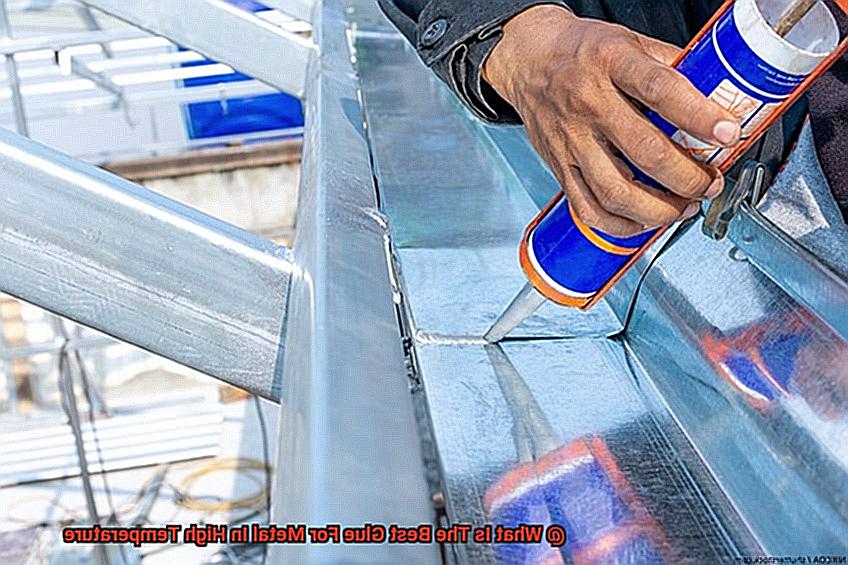
Silicone-Based Adhesives for High Temperature Bonding
When it comes to high temperature bonding applications, you need an adhesive that can handle the heat. Enter silicone-based adhesives, the superheroes of the adhesive world. These extraordinary glues offer exceptional heat resistance, chemical resilience, and bonding strength. In this blog post, we will explore the advantages of silicone-based adhesives for high temperature bonding and provide key considerations for selecting the right adhesive for your specific application.
Advantages of Silicone-Based Adhesives:
Unmatched Heat Resistance:
Silicone-based adhesives can withstand extreme temperatures without losing their adhesive properties. With a temperature range of -50°C to 300°C or higher, these glues excel in the hottest environments. They are ideal for metal bonding applications subjected to intense heat.
Excellent Chemical Resistance:
In addition to impressive heat resistance, silicone-based adhesives also offer excellent chemical resistance. They resist degradation from exposure to various chemicals and solvents, ensuring long-lasting bonds even in harsh chemical environments.
Flexibility and Elasticity:
Silicone-based adhesives exhibit good flexibility and elasticity, absorbing vibrations and movements without compromising their bond. This is crucial for metal bonding applications as metals expand and contract under varying thermal conditions. The flexibility of silicone-based adhesives accommodates these movements and prevents bond failure.
Key Considerations for Selecting the Right Silicone-Based Adhesive:
Heat Resistance Capabilities:
Not all silicone-based adhesives are created equal in terms of heat resistance. It’s crucial to choose an adhesive specifically designed for high temperature applications that can withstand the temperatures required for your specific application.
Compatibility with Metal Surface:
Different metals have different surface characteristics, requiring different adhesive formulations for optimal bonding. Ensure that the adhesive you choose is compatible with the metal surface to achieve a strong and durable bond.
Curing Time:
Consider the curing time of the adhesive, as some silicone-based adhesives may require longer curing times at high temperatures. Depending on your production requirements, you may need an adhesive with a faster cure cycle.
Specialty Glues for Extreme Heat Conditions
When faced with extreme heat conditions, ordinary glues simply can’t handle the heat. That’s where specialty glues swoop in to save the day. Crafted to endure scorching temperatures without sacrificing their bonding properties, these exceptional adhesives are indispensable in industries such as automotive, aerospace, and manufacturing. In this article, we’ll delve into the world of specialty glues designed for extreme heat conditions and explore their distinct temperature ranges. Prepare to dive into a world of adhesive excellence.
Epoxy Adhesive – The Temperature Champion:
When it comes to extreme heat situations, epoxy adhesive reigns supreme. Boasting an awe-inspiring temperature resistance of up to 600°F (315°C), it fearlessly confronts the heat like no other glue. This makes epoxy a favored choice in industries where components face drastic temperature fluctuations.
Silicone Adhesive – The Versatile All-Star:
Silicone adhesives are akin to the Swiss Army knives of extreme heat glues. They bravely endure temperatures ranging from a chilling -85°F (-65°C) up to an astonishing 500°F (260°C). Not only do they excel in high-temperature environments, but they also showcase remarkable resilience against chemicals and UV radiation.
Ceramic Adhesive – The Heat Conqueror:
When faced with truly blistering temperatures, ceramic adhesive claims the crown. With an unrivaled capacity to withstand scorching heat up to a mind-boggling 3000°F (1650°C), this glue is tailor-made for bonding ceramic components in industrial furnaces and kilns.
Power in Combination:
Some specialty glues merge different adhesive materials to enhance their temperature resistance. For instance, hybrid glues may blend epoxy with silicone, resulting in a product that can endure even higher temperatures than either material alone.
Tips for Success:
To achieve robust and enduring bonds in extreme heat conditions, adhere to these essential tips:
- Always carefully peruse and follow the manufacturer’s instructions regarding application and curing times.
- Ensure meticulous surface preparation by thoroughly cleaning and roughening the surfaces before applying the glue.
- Take into account the specific form of glue that best suits your application, be it liquid, paste, or film.
Preparing Surfaces for Maximum Adhesive Efficiency
Imagine the frustration of using an adhesive only to have your carefully crafted project fall apart. Don’t let weak bonds hold you back. In this article, we’ll delve into the world of adhesive bonding and explore the key steps to prepare surfaces for maximum adhesive efficiency.
Step 1: Cleanliness is Key:
Before applying any adhesive, cleanliness is crucial. Eliminate dirt, dust, and grease by thoroughly cleaning the surfaces. Utilize a suitable solvent or degreaser to ensure a pristine surface, free from contaminants that can hinder the bonding process.
Step 2: Dry as a Bone:
Moisture is the nemesis of adhesive bonding. After cleaning, ensure the surfaces are bone-dry. Utilize a clean cloth or allow them to air dry completely. Remember, a dry surface sets the stage for optimal adhesion and robust bonds.
Step 3: Roughen Up for Better Grip:
Metal surfaces are notorious for their smooth and slippery nature, making it challenging for adhesives to cling effectively. Enhance adhesion by gently sanding the surface with fine-grit sandpaper. This creates a rough texture that allows the adhesive to grip onto the metal surface more securely.
Step 4: Primer and Promote Excellence:
Certain adhesives may require the use of a primer or adhesion promoter to enhance bonding. These products establish a strong bond between the adhesive and metal surface. Follow the adhesive manufacturer’s instructions regarding primers or adhesion promoters.
Step 5: Heatproof Heroics:
Consider the temperature at which your adhesive will be exposed. High temperatures can cause adhesives to degrade or lose their bond strength. Opt for an adhesive specifically formulated for high-temperature applications to ensure enduring bonds.
Step 6: Precise Application:
Now it’s time to apply the adhesive. Pay close attention to the manufacturer’s instructions. Apply a thin, even layer of adhesive onto one prepared metal surface, then firmly press the two surfaces together. Utilize clamps or other methods to keep them in place until the adhesive cures.
Step 7: Patience is a Virtue:
Allow sufficient time for the adhesive to cure before subjecting it to high temperatures or stress. Curing times vary depending on the adhesive type, so consult the manufacturer’s recommendations.
sMrY7_V0I5A” >
Also Read: How to Glue Rubber to Painted Metal?
Conclusion
After extensive research and analysis, it is clear that choosing the best glue for metal in high temperatures is crucial. When faced with extreme heat conditions, ordinary adhesives simply won’t cut it. You need a glue that can withstand the intense temperatures without losing its bonding strength.
Fortunately, there are a few options available that excel in this challenging task. One such adhesive is epoxy. Known for its exceptional heat resistance, epoxy can handle temperatures up to 300 degrees Fahrenheit (150 degrees Celsius) with ease. Its strong bond ensures that your metal components stay securely attached even in the hottest environments.
Another reliable choice is cyanoacrylate, commonly known as super glue. While super glue may not have the same temperature resistance as epoxy, it still performs admirably in high-temperature situations. With a melting point of around 180 degrees Fahrenheit (82 degrees Celsius), super glue can hold up well under moderate heat.
For even more demanding applications, silicone-based adhesives are worth considering. Silicone glues offer excellent thermal stability and can withstand temperatures up to an impressive 600 degrees Fahrenheit (315 degrees Celsius). This makes them ideal for industrial settings where extreme heat is present.
Ultimately, the best glue for metal in high temperatures depends on your specific needs and circumstances. Consider factors such as temperature range, curing time, and application method when making your decision. By choosing the right adhesive, you can ensure a strong and durable bond that will withstand even the most scorching conditions.
In conclusion, when it comes to gluing metal in high temperatures, don’t settle for subpar adhesives. Invest in an adhesive like epoxy or silicone that has been specifically designed to handle extreme heat conditions. Remember to follow proper application instructions and take all necessary safety precautions when working with these adhesives.

